We have a tendency to keep things in our pictures because we’re proud of them, we worked hard on them, they turned out well, even if they may not serve the greater good of the piece. Here’s an exercise that might help you work past that limitation, and give you some insights about yourself, your art and your process. But first, a little background…
Ok, like everybody, I’m writing a novel, with pictures! 🙂 Maybe someday I will finish it. My book group buds tell me it looks like a kids book on the outside but the story on the inside is more adult (so basically the opposite of me).
Books, like paintings, normally have a “rough sketch” phase, which in writing is called the “rough draft.” It’s not polished or even remotely publishable. You just have to get your idea down, even if it’s full of plot holes, or if some entire scenes are abbreviated to “they fight and character A wins” if that’s all you know about that scene at this stage. Finishing your rough draft is an important milestone.
So I was surprised to hear, on a writers’ podcast a couple of years ago, an author say that once she finishes the rough draft—she throws it away! She tosses it and starts over, the notion being that whatever she remembers will necessarily be the important and impactful stuff. Maybe she was happy with none of it, so rather than struggle to fix it, she washes her hands of it entirely (which is far more effective than Purel, btw).
This author repeats this process a few times before locking in a final draft, and then proceeding to polish / edit. So I thought, why not adapt this to making a picture?
The idea was I would first do a thumbnail to settle on an idea, then spend 15 minutes on a rough sketch, then put that away and start over. (I didn’t toss it out, because when I was done I wanted to have them for comparison). Then I’d start over with another blank sheet of paper. I used printer paper so there was no “preciousness” associated with these sketches.
MOVE UP With each successive drawing, partly I’d be trying to remember what I’d done before, but since I had to redraw the whole thing anyway, there was not much incentive for trying to preserve something just because it had been done well.
I struggle a lot in the rough stages of making a picture. Rendering is quick and easy for me, but composition, gesture, pulling together an idea, these are often painful. It’s like my free-thinking creative brain and my “this is what the image needs to specifically communicate” brain can’t come together. So this is the shakiest territory for me. As such, when I get anything that works, I tend to want to preserve it even if it may not be best for the overall picture. This exercise took a lot of courage for me.
Why? It’s just some cheap printer paper and a few drawings no one ever needs to see. But making a picture, like all art forms, is a performance. And we can get stage fright even when there is no audience there. That feeling of exposure, of risk, that this is important is critical to putting on a good performance, but it also can cause performance anxiety.
Because for many of us the pictures we make are us. If they suck, we suck. Whether you are a professional artist, a hobbyist, or someone who doesn’t draw at all, but sits down and makes one picture, that picture is a perfect mirror of you at that moment.
One specific that that happened was that in drawing the same thing over and over (like the tentacles), I got very fluent with it, so I could draw them more and more directly, with fewer marks. So a basic fluency developed that allowed me to create marks that were lively and communicative automatically. I think the fourth and fifth drawings look pretty good considering there is no under-drawing to speak of.
Sometimes we turn in a finished work there is little or no reaction from the client. This is disappointing, not because we are seeking praise or gratitude, but because the only measure of our art is whether it had an emotional impact on the viewer. Whether it caused an emotional reaction, a feeling.
So I was tickled when another artist, Giovanni Tomas was inspired enough by my drawing to make this sculpt from it:
And here’s a video of the sculpt.
What did I learn from this process? For one thing, I got a lot more confident in my drawing abilities, because rather than carefully preserving little bits that I’d drawn well, I had to redraw everything, and was relieved to find that this was not a problem. I think I was previously underestimating how much baggage that was. Now I know that the idea, or AN IDEA will come out, no matter what, and it probably will get better from a complete redo (though I don’t think that is practical as a matter of course).
I also think with this first exploration I think I got locked into a fairly uninteresting pose, and only moderately interesting character. I was so focused on the experiment itself I didn’t put much effort into the idea. I wasn’t working on something I really cared about or that engaged me. If I were to do this kind of exercise again I would iterate a lot more broadly, rather than use each successive drawing to simply develop or fine tune the original idea.
This exercise was super hard (for me) but felt good in the long run. Like working out, I guess. Give it a try and you may learn something about yourself too. Trying things that we may never have thought of ourselves, or which are uncomfortable and off-putting is one way we learn and grow.
More from Giovanni:
https://www.facebook.com/GiovanniTomas3dartist
https://www.artstation.com/gioto


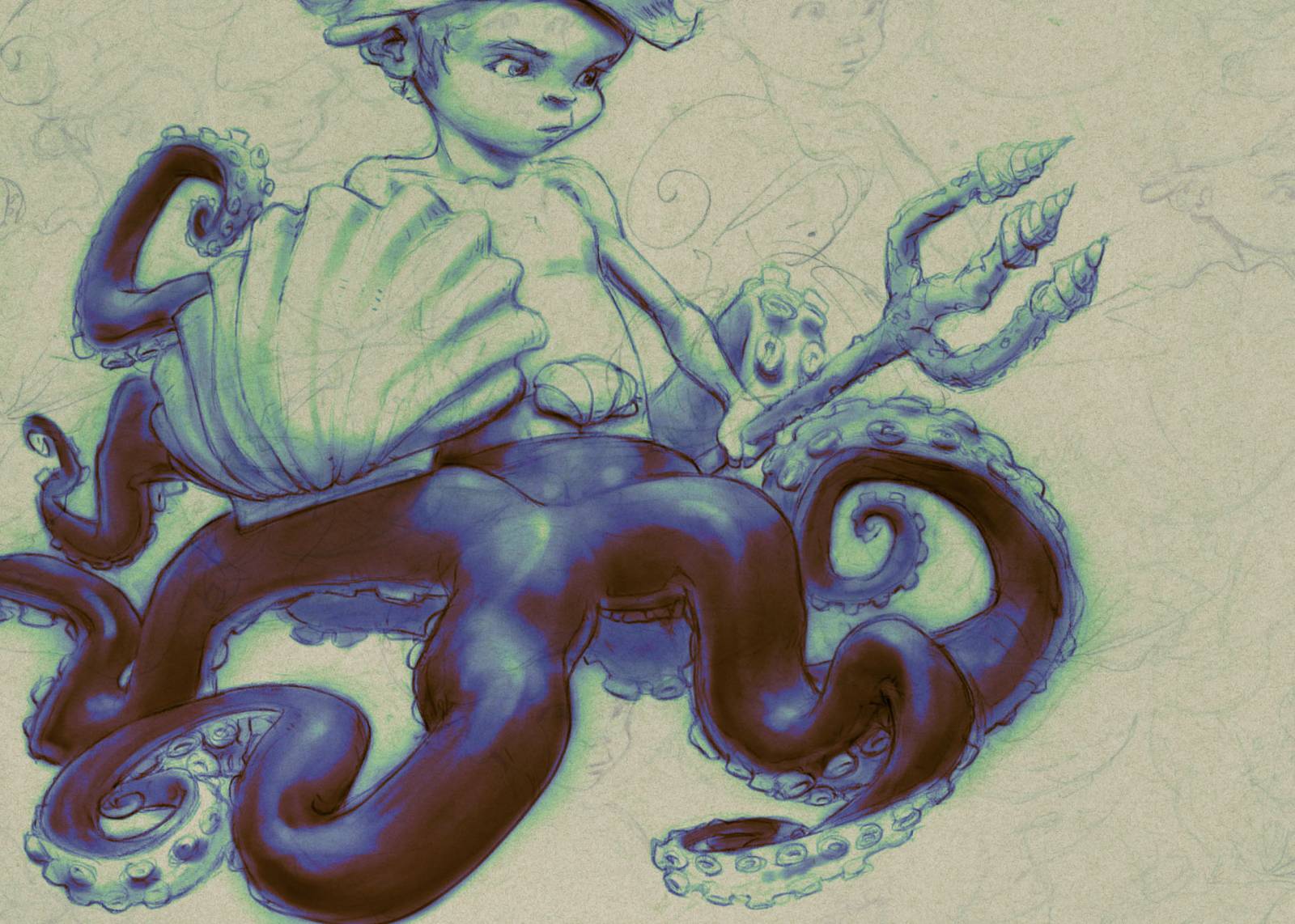
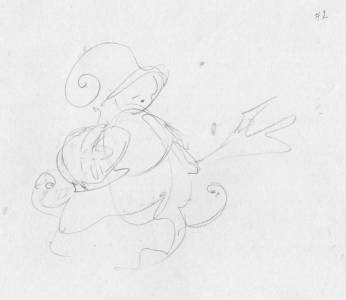
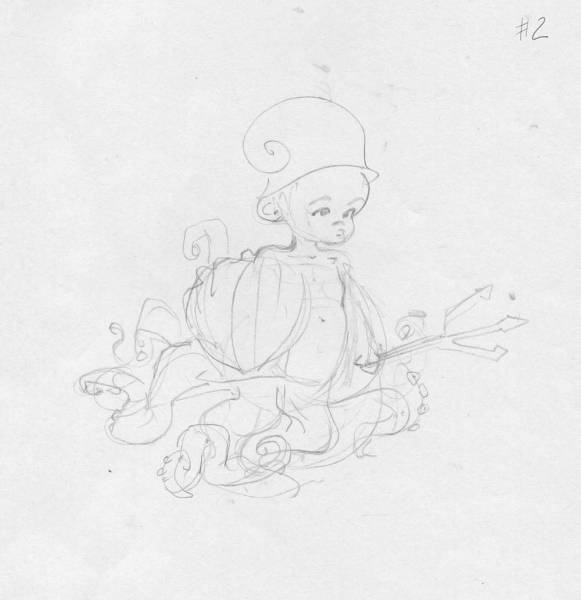
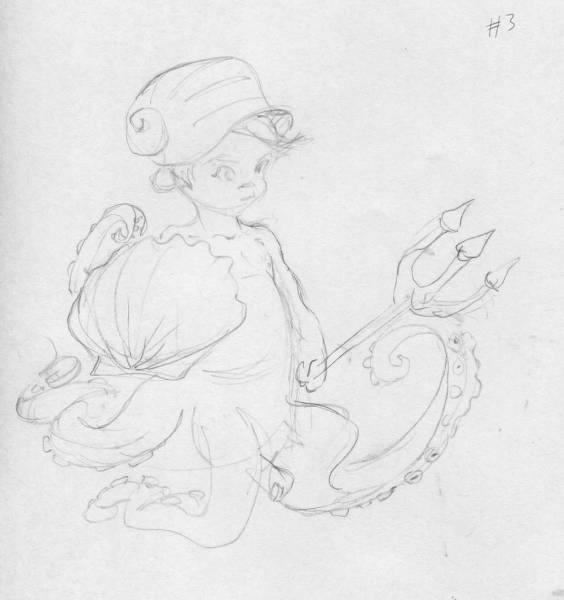
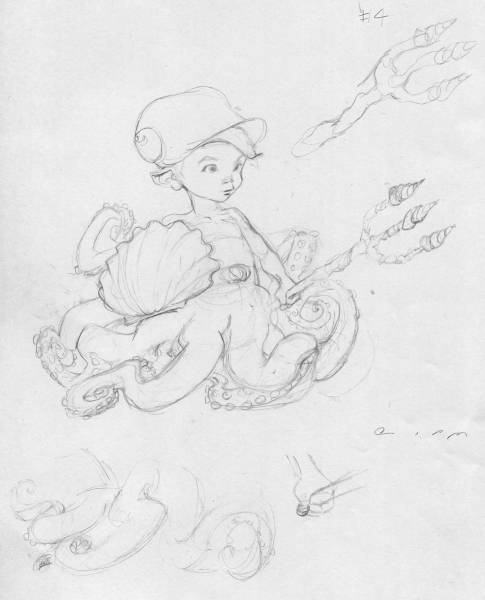
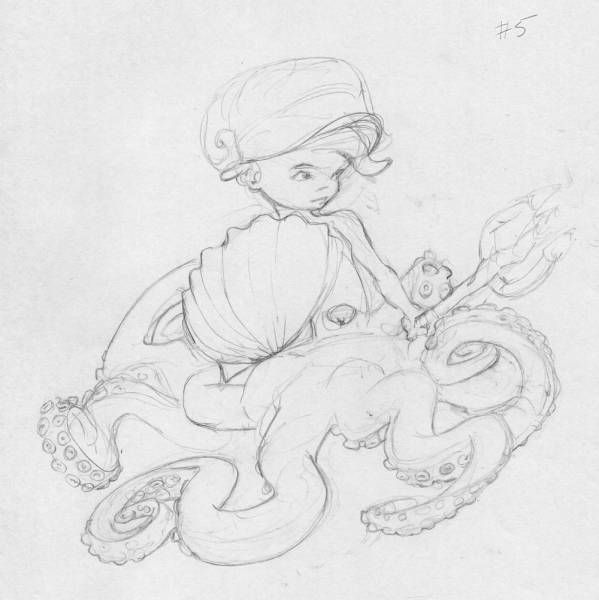

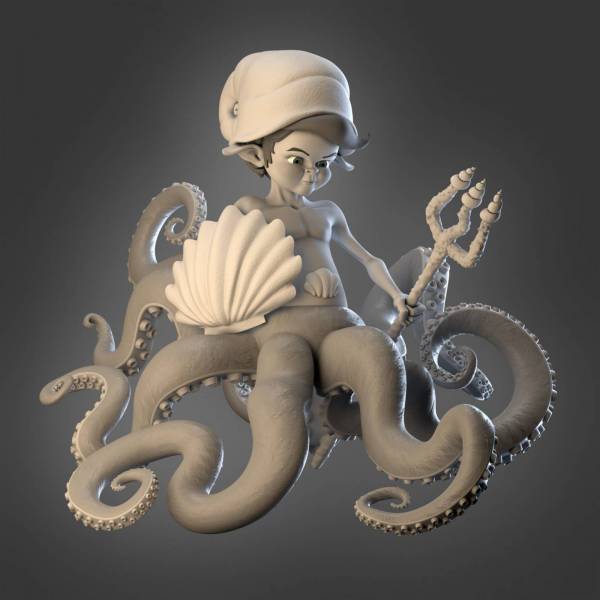
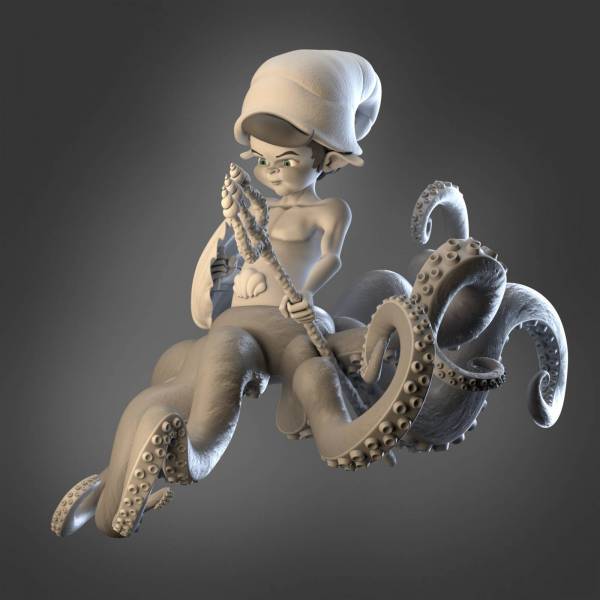
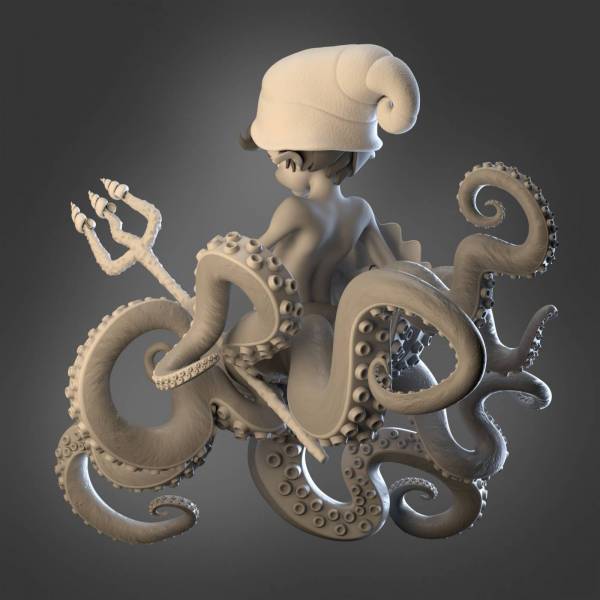
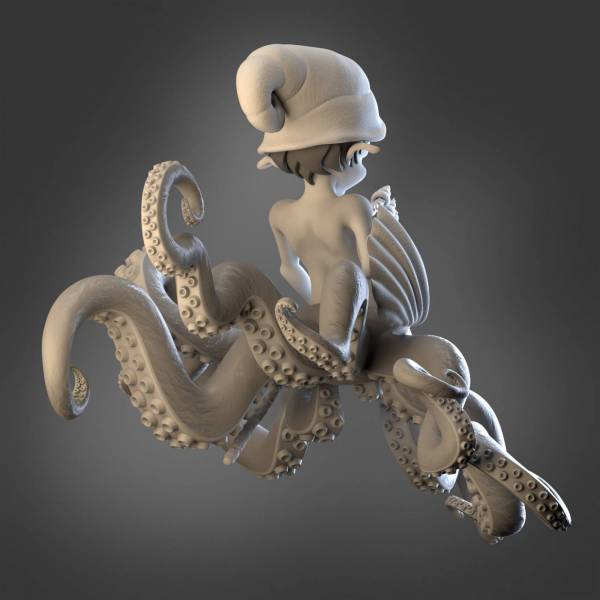
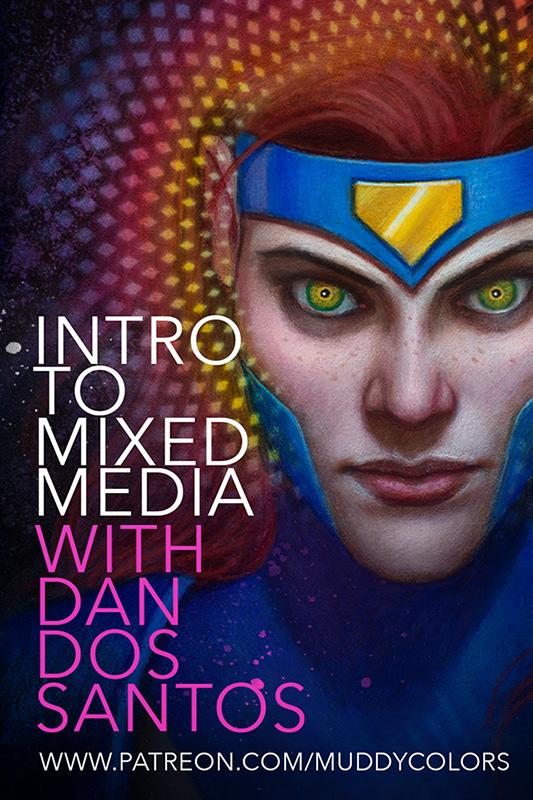
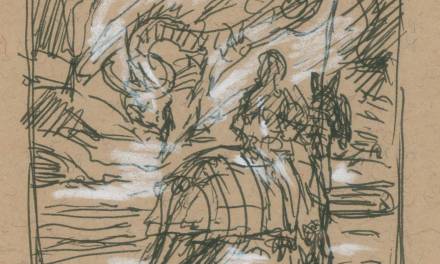
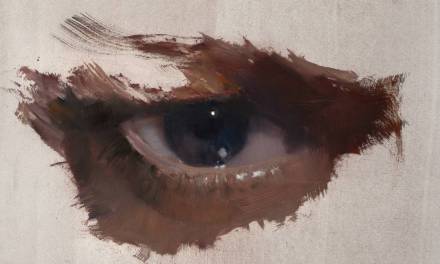
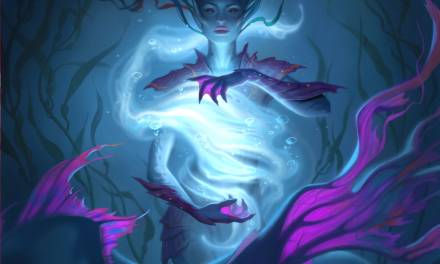
Thank you for this article, Chris. I often find that I am a lot more confident in my sketching and drawing phase than the rendering and finishing. As far as throwing away work, I botrowed a ritual from Justin Gerard where I burn older art once a year, and find that it’s quite cathartic to release pieces that just didn’t work. So, perhaps an extreme version of throwing away art.
Oh, that is extreme! I hang onto everything, though I never look at a lot of it. One reason is to show those just starting out that we were all in that situation, and also to show that even after years of doing this we can still produce duds.
Hey Chris!
This was a super enjoyable read! Everything you said were exactly the problems I’ve been facing.
I find this process very enjoyable, its iteritive and frees you up to make discoveries to make the best picture. ( I also tape the preliminaries to the back of the final canvas to remember what I started with.) Like Pixar said “when your stuck, start over. If it’s important, it’ll come back.” 1 way I cure stage fight is I listen to music, the quality may suffer but it allows me to silence my inner critic when I can’t hear it and it gets me to draw on an emotional level. Though practically My 2 problems with starting over I’ve found to be weary of is 1. Its very messy and 2. I often do my best work on the 2nd or 3rd try and it can get worse the more I go.
The detailing phase to me is the hardest part, I can’t tell you the amount of promising starts I’ve had ruined by my lack of technique and rendering. Its funny how even my family will like the first small sketch better than the final. To me I know where I want to go, I just have no idea HOW to get there.
I agree with you with the difficulty of balancing “creative thinking” and “what the picture needs” mindset . As a hobby comic artist I actually found it a hinderance to make the a fully fledged script before creating the final work. When I wrote everything in detail I found the final art stiff, uninspired and exhausting to work on, like I had to re-conjure the entire story from the beginning and then draw it exactly how I wrote it, making experimenting later feel too risky and the process no fun.
So now I make a plot outline then fill the details with a storyboard (which I heard is how phineas and ferb was written.).Its still difficult but its a lot easier to think in imagery and loosely draw it than to visualize, write, visualize again and draw.
It’s great that you see when and why your pictures go south (in the rendering / detail stage). A LOT of artists have this problem, but many don’t see it. Their sketches are much more engaging than their finished color work (even to them). But it’s tough to admit that. And non-artists tend to see it as “more is more” meaning they value a tightly finished, color piece, even if it’s lost all the spark of the sketch.
What may be happening with you is not that you lack rendering skills, but that you are failing to identify and preserve what made the sketch special and powerful as you move through the rendering stage. This is something we all struggle with.
Thank you for your reply and encouragement!
I’m glad that I’m not the only one who struggles with that. I’m constantly in the extremes of either too loose/generic or too complex/hard to read. It can be really disheartening to find 2 hours of work lead to a dead end. The pessimist in me says its wasted time but I remind myself its a discovery process and fixing wrong paths is part of the job. I mostly feel bad when an intended 5 minute quick sketch turns into a 2 hour rescue mission. I wonder if its common because people tend to think of details as you care more and simpler gestural work as laziness?
I really arpeciate the advice! I’ll be sure to take note of what I like before I continue next time. Mainly I consider my technique bad because my finishes are never results of deliberate choice but rather a series of compromises, shots in the dark and luck because I don’t know how to pull off what the picture needs. Especially when I see the art I want to make but can’t, due to the fact that I have no idea how they did it, what they were thinking or how to practice it.
“A two hour rescue mission”–that is such a great way of putting it. Honestly from your description of your experience it sounds like you are doing everything right. You just don’t realize it’s supposed to be like that. Who would have thought an undertaking that causes you to question your very self-worth and reason for existing at every turn would be so difficult? 🙂